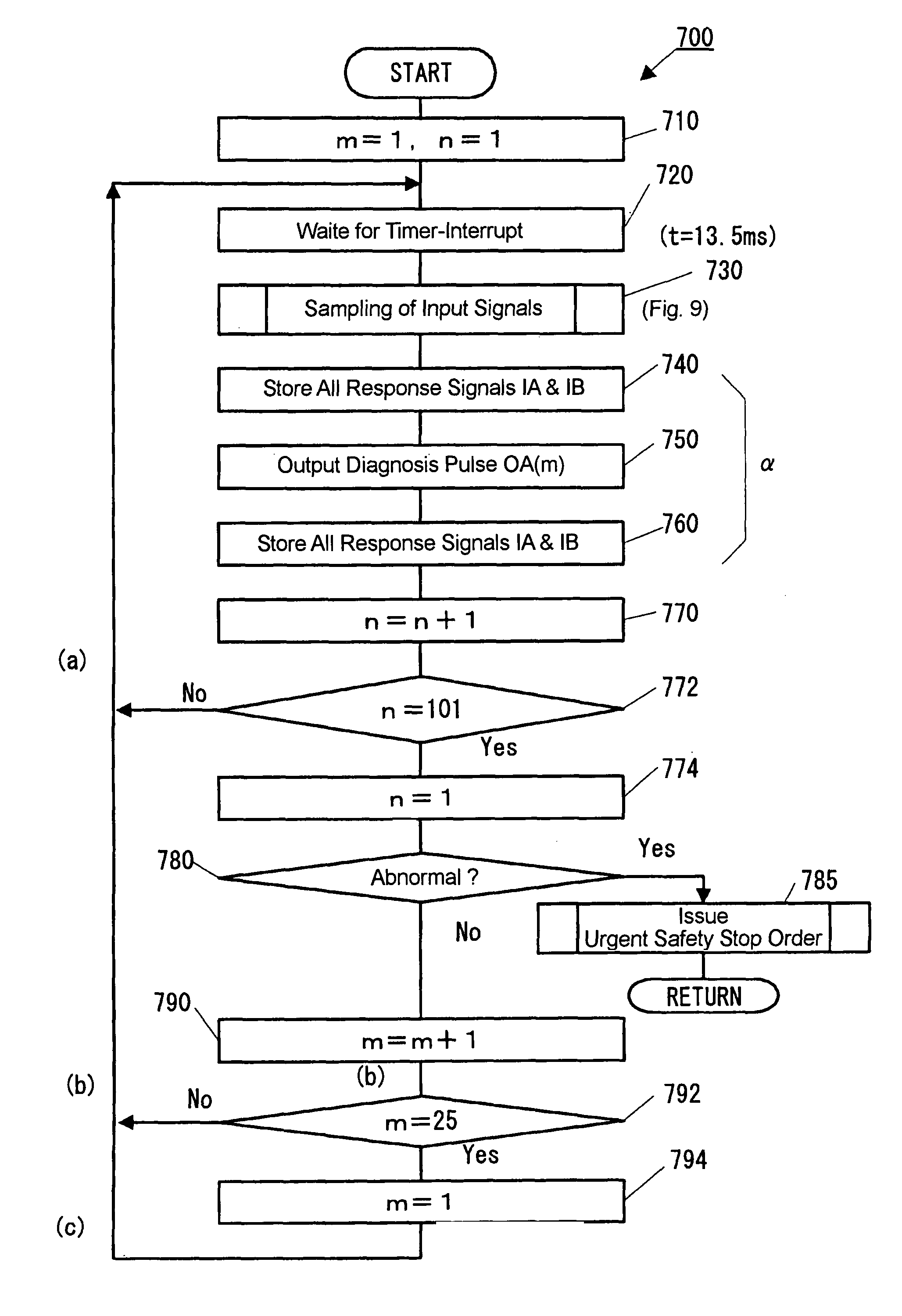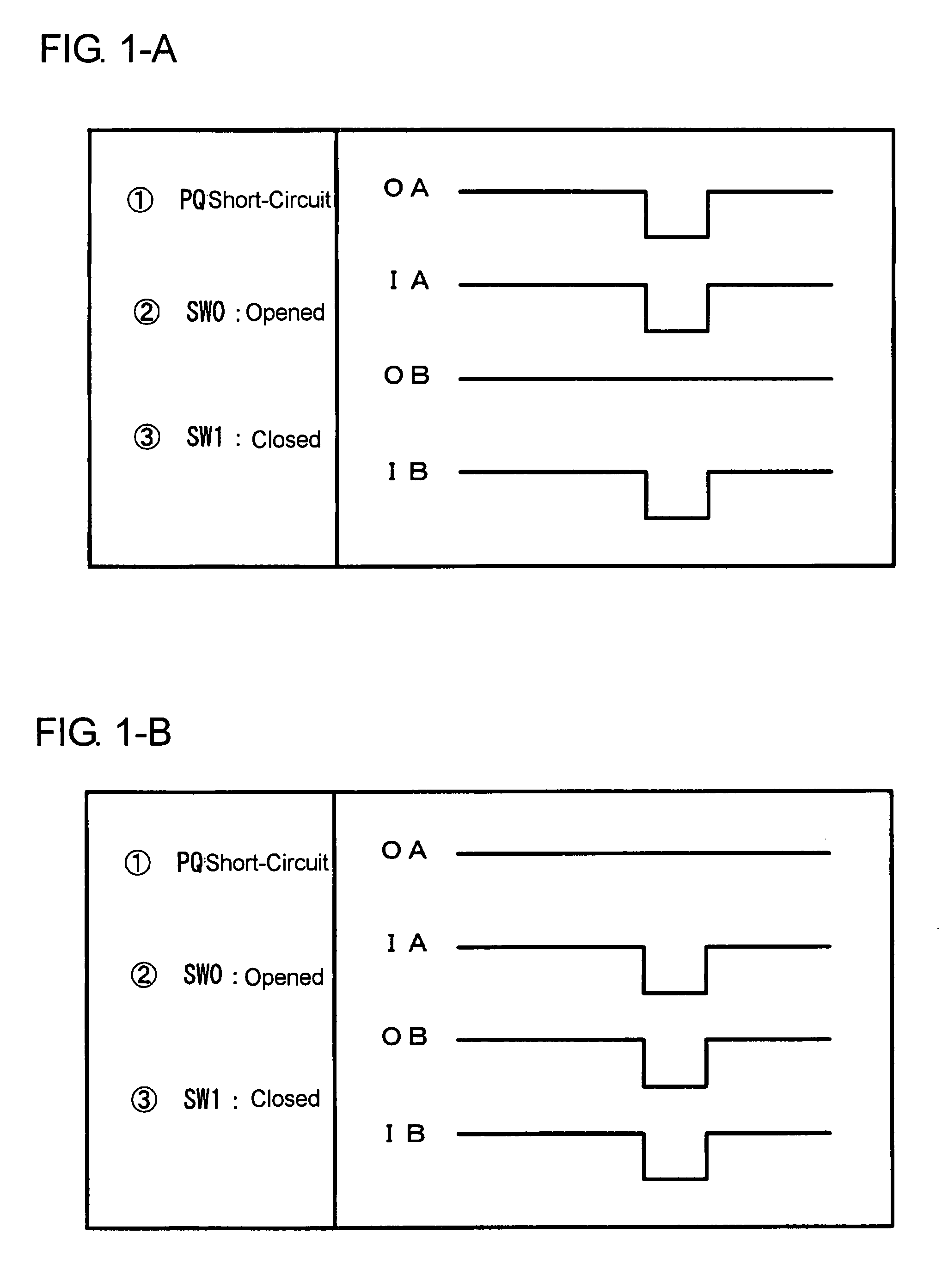Programmable controller
a programmable controller and controller technology, applied in the field of sequence control, can solve the problems of increasing actual problems, difficult to say that the required time taken to detect abnormalities such as the aforementioned short-circuit can be shortened sufficiently, and the effect of increasing the dependence of both circuit groups
- Summary
- Abstract
- Description
- Claims
- Application Information
AI Technical Summary
Benefits of technology
Problems solved by technology
Method used
Image
Examples
first embodiment
[0067]FIG. 2 shows an input circuit 200 of a programmable controller in the first embodiment. Input terminals O and P constitute first input terminals by these two terminals. Further, likewise, input terminals Q and R constitute second input terminals. Switches SW1 and SW0 are those duplexing a manual emergency stop button, and when the emergency stop button is pushed, both of the switches SW1 and SW0 are opened simultaneously. That is, when the emergency stop button is pushed, electrical connection is cut off both between the input terminals O, Q and between the input terminals P, R. The emergency stop button is one representing an external input device, and in fact, a plurality of other external input devices (not shown) are arranged and connected in the same manner as the emergency stop button in parallel relation with the emergency stop button. The external input devices are optional, and there are connectable contacts of various kinds such as, for example, switches, limit switc...
first modification
[0139]For example, in the self-diagnosis (FIG. 7) in the aforementioned first embodiment, all the bits of the response signal IA are stored every time respectively in the predetermined evacuation areas at step 350. However, in dependence on the judgment method at the subsequent step 380, it is not necessarily required to do so.
[0140]The step 540A (FIG. 9) and the step 540B (FIG. 10) are configured by utilizing a judgment criterion that if a signal of the value “0” (OFF signal indicative of the interruption of the input) is inputted even once of the five times, that bit is judged to be “0”. For example, it may be the case that by utilizing the judgment criterion adequately, it becomes possible to dynamically execute the most part of the judgment processing, so that the evacuation areas for reference data (input signals) can be suppressed to the minimum.
second modification
[0141]Further, although in the foregoing first embodiment, the duplexing of the input circuit has been practiced with the two systems separately including the A-system and the B-system, the multiplexing of the input circuit may be realized in a triplexing form or may be realized in a quadruplexing form. For example, where the input circuit is triplexed by three systems including the A-system, the B-system and the C-system, it becomes possible to apply the majority theory to the non-coincidence detection processing method in the non-coincidence detection means or to dynamically reduce the triplexed system to the duplexed system where an abnormality occurs in one system only. Therefore, it becomes also possible to greatly reduce the chances for the system stops.
[0142]By constructing the means in the present invention properly, it is possible to lead the operation of the present invention regardless of the multiplexing of these means. That is, the substantive operation principle of the...
PUM
 Login to View More
Login to View More Abstract
Description
Claims
Application Information
 Login to View More
Login to View More - R&D
- Intellectual Property
- Life Sciences
- Materials
- Tech Scout
- Unparalleled Data Quality
- Higher Quality Content
- 60% Fewer Hallucinations
Browse by: Latest US Patents, China's latest patents, Technical Efficacy Thesaurus, Application Domain, Technology Topic, Popular Technical Reports.
© 2025 PatSnap. All rights reserved.Legal|Privacy policy|Modern Slavery Act Transparency Statement|Sitemap|About US| Contact US: help@patsnap.com



